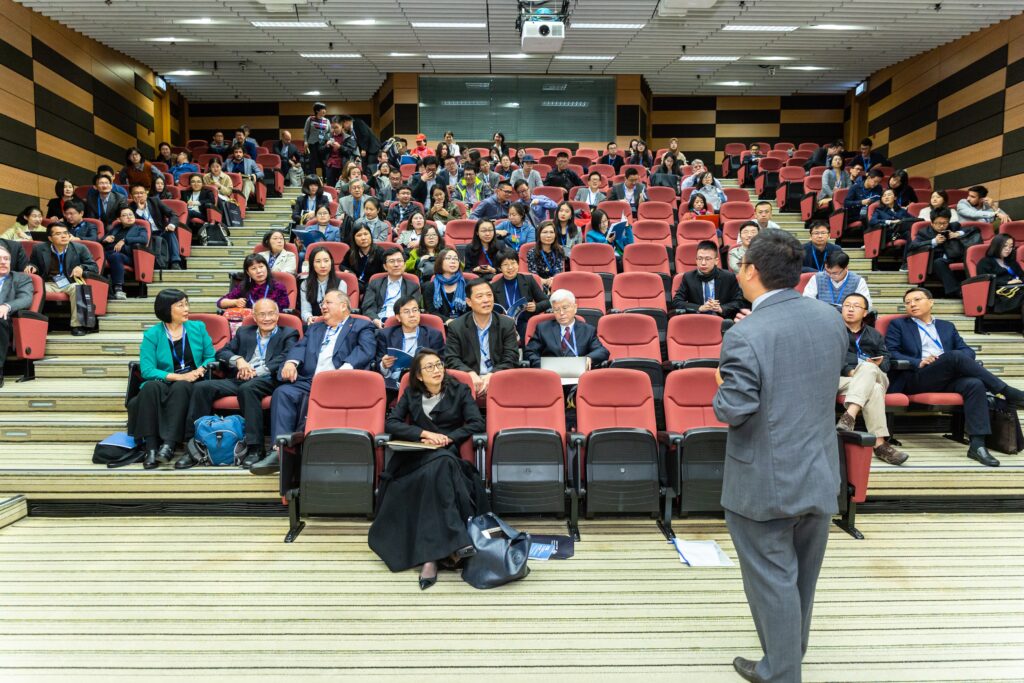Let’s explore why some professionals thrive while others struggle to connect. At its core, workplace interactions rely on clear exchanges that build trust and align priorities. Research shows leaders who master this skill inspire teams to achieve shared goals 37% faster than those who don’t.
Consider how figures like Martin Luther King Jr. mobilised communities through purposeful messaging. Their success wasn’t accidental, it tapped into human needs for clarity and belonging. In modern offices, this translates to reducing ambiguity around roles and expectations.
Studies reveal employees feel more confident when leaders articulate visions effectively. This awareness directly impacts job satisfaction and productivity. Yet, misunderstandings still plague many organisations. We’ll uncover why these gaps persist and how to address them.
Key Takeaways
- Trust-building relies on consistent, transparent exchanges between colleagues
- Influential leaders use tailored messaging to align teams with organisational aims
- Clear expectations reduce workplace stress and improve task completion rates
- Psychological safety in discussions boosts creative problem-solving by 28%
- Regular feedback loops prevent minor misunderstandings from escalating

Introduction to Effective Communication in the Workplace
Truly impactful workplace communication goes beyond memos and emails. It creates a continuous loop where colleagues exchange ideas, clarify priorities, and align efforts. Unlike one-way messaging, this approach encourages questions and adapts to feedback.
When teams engage in meaningful exchanges, they solve problems faster according to Gallup research. This dynamic process helps employees understand their role in larger objectives while feeling heard by leadership.
Core elements distinguish productive conversations from superficial chats. Active listening ensures messages land as intended, while transparency about company challenges builds trust. Regular check-ins turn abstract goals into daily actions.
The real power lies in connecting big-picture strategies with frontline realities. Clear communication from managers helps staff prioritise tasks that directly impact organisational success. This alignment reduces duplicated work and missed opportunities.
Organisations with strong dialogue practices see 31% lower turnover rates (SHRM, 2023). Employees stay longer when they grasp how their contributions matter, proving that quality exchanges drive tangible business outcomes.
The Psychology Behind Effective Communication in the Workplace
Breaking down the mental processes in professional interactions reveals why some messages stick. Neuroscience shows our brains prioritise clarity and emotional resonance over raw data. This explains why teams using intentional dialogue strategies outperform others in problem-solving tasks.
Theoretical Foundations and Research
Studies from Harvard Business Review highlight a crucial truth: speaking isn’t the same as being understood. True dialogue requires active neural engagement between parties. When leaders frame ideas around shared goals, employees’ mirror neurons activate, fostering alignment.
| Effective Approach | Ineffective Approach | Impact Difference |
|---|---|---|
| Open-ended questions | One-way directives | 41% higher engagement |
| Empathy statements | Neutral language | 33% faster conflict resolution |
| Progress acknowledgements | Generic feedback | 27% stronger trust growth |
Impact on Team Performance and Trust
Consistent transparency doesn’t just build rapport, it rewires how teams collaborate. Groups with psychological safety report fewer errors, as members voice concerns early. A 2023 study on workplace dialogue found weekly check-ins reduce misalignment by 54%.
Our brains release oxytocin during meaningful exchanges, cementing cooperative instincts. This biological response explains why teams mastering these principles retain talent longer than industry averages. The science is clear: how we share ideas matters as much as what we share.

Exploring Psychological Barriers in Communication
Unseen mental blocks frequently derail workplace dialogues before they properly begin. Let’s unpack why well-intentioned exchanges often miss their mark, starting with leadership blind spots.
Barriers from Leadership Perspectives
Many managers fall prey to the illusion of completion, assuming messages land because they’ve been sent. A 2023 study found leaders overestimate their team’s understanding after briefings. This gap widens when power dynamics discourage questions.
Some leaders flood teams with excessive details, creating cognitive overload. Employees receiving 50+ weekly updates show lower retention rates. Status-conscious managers compound this by withholding context, expecting compliance without explanation.
Obstacles Faced by Employees
Frontline staff often battle invisible hurdles. Past experiences with dismissive leaders create psychological resistance to speaking up. Teams lacking safety nets report fewer innovative suggestions according to recent analysis.
Fear of judgment silences crucial conversations. Employees who’ve faced criticism for admitting mistakes become less likely to request help. This cycle persists until leaders actively demonstrate approachability through consistent actions, not just policy statements.
Practical Strategies to Enhance Workplace Communication
What separates productive teams from those stuck in endless misunderstandings? Simple yet intentional approaches transform how colleagues connect. We’ll share proven methods that foster clarity and collaboration.
Active Listening Techniques and Empathy
True listening means prioritising understanding over responding. Put devices aside, maintain eye contact, and notice body language cues. Ask clarifying questions like “What challenges are you facing with this task?” to uncover deeper concerns.
Empathetic leaders see higher retention rates. Acknowledge emotions with phrases like “That sounds frustrating” before problem-solving. This builds psychological safety, encouraging staff to share ideas freely.
Constructive Feedback and Customised Messaging
Effective feedback focuses on actions, not personalities. Instead of “You’re disorganised”, try “Let’s explore systems to track deadlines better”. Tailor delivery styles, some team members prefer quick Slack check-ins, others need detailed email summaries.
| Approach | Impact | Best For |
|---|---|---|
| Weekly 1:1s | Up to 30% improvement in team engagement and 25% productivity boost | Long-term projects |
| Real-time praise | Around 67% increase in motivation and improved team cohesion | Quick wins |
| Written summaries | Around 30% better recall and accountability | Complex processes |
Adapt your methods based on individual needs. Visual learners appreciate flowcharts, while analytical types crave data points. Regular adjustments keep exchanges meaningful and productive.

Creating Transparent and Trust-Based Work Environments
Open dialogue forms the backbone of thriving organisations. When leaders share both successes and setbacks, teams develop genuine confidence in their collective mission. This approach fosters environments where innovation flourishes naturally.
Building a Culture of Honesty
Consistent truth-telling reshapes team dynamics. Regular “state of the union” updates about organisational goals help employees connect daily tasks to bigger-picture outcomes. Staff who receive candid feedback demonstrate higher engagement in problem-solving initiatives.
Practical methods include:
- Monthly leadership Q&A sessions with anonymous questions
- Public recognition of both achievements and course corrections
- Cross-departmental shadowing programmes
Overcoming Information Overload
Transparency shouldn’t mean drowning teams in data. Effective organisations use structured frameworks to share critical information without overwhelming staff. A 2023 study showed teams using prioritisation matrices resolved conflicts faster.
| Strategy | Frequency | Best For |
|---|---|---|
| Executive briefings | Quarterly | Strategic shifts |
| Department dashboards | Weekly | Progress tracking |
| Micro-updates | Daily | Urgent changes |
Leaders who master this balance see fewer duplicated efforts. By creating clear channels for essential updates, they empower teams to focus on high-impact work while maintaining full organisational awareness.
The Role of Preparation and Focus in Meaningful Conversations
What transforms routine chats into impactful exchanges? Structured preparation creates fertile ground for productive discussions where ideas blossom. Teams using shared agendas report fewer misunderstandings, according to recent HR studies.
Establishing Safe Spaces for Discussion
Regular 1:1 meetings build psychological safety through predictable rhythms. When team members know they’ll have dedicated time to share thoughts, they prepare more thoughtful contributions. A 2023 survey found employees share concerns more openly when managers consistently honour these sessions.
Three strategies foster trust:
- Pre-meeting question prompts sent 24 hours in advance
- Rotating discussion leadership between participants
- Clear confidentiality agreements for sensitive topics
Setting Clear Agendas and Goals
Shared preparation documents eliminate surprise factor anxiety. Managers who circulate meeting objectives beforehand see 41% faster decision-making. This approach lets participants:
- Process complex information beforehand
- Gather relevant data points
- Formulate constructive questions
| Meeting Type | Prep Time | Outcome Improvement |
|---|---|---|
| Project kick-offs | 15 mins | 29% |
| Performance reviews | 30 mins | 47% |
| Brainstorm sessions | 10 mins | 33% |
Teams using these frameworks complete goals faster while maintaining stronger working relationships. The secret lies in transforming anxiety into anticipation through thoughtful groundwork.
Conclusion
Building bridges between colleagues requires more than exchanging words, it demands strategic intent. By addressing both spoken and unspoken needs, teams create environments where ideas flow freely and genuine collaboration thrives. Organisations that prioritise this development see measurable gains in employee retention and project success rates.
Overcoming communication barriers starts with recognising every team member’s role in shaping dialogue. Simple shifts, like framing feedback around shared goals, help people contribute meaningfully without fear of judgment. These adjustments foster trust, directly impacting business outcomes and career progression.
Remember, impactful exchanges aren’t about perfect phrasing. They rely on consistent efforts to adapt language and tone to different situations. Leaders who model active listening and transparency set the standard for entire teams.
Ready to begin? Start small: schedule regular check-ins focused on understanding rather than directives. Track how clearer expectations improve task completion and team morale. With practice, these habits become the foundation for sustainable success in our ever-changing professional landscapes.

This Article is Reviewed and Fact Checked by Ann Sarah Mathews
Ann Sarah Mathews is a Key Account Manager and Training Consultant at Rcademy, with a strong background in financial operations, academic administration, and client management. She writes on topics such as finance fundamentals, education workflows, and process optimization, drawing from her experience at organizations like RBS, Edmatters, and Rcademy.



